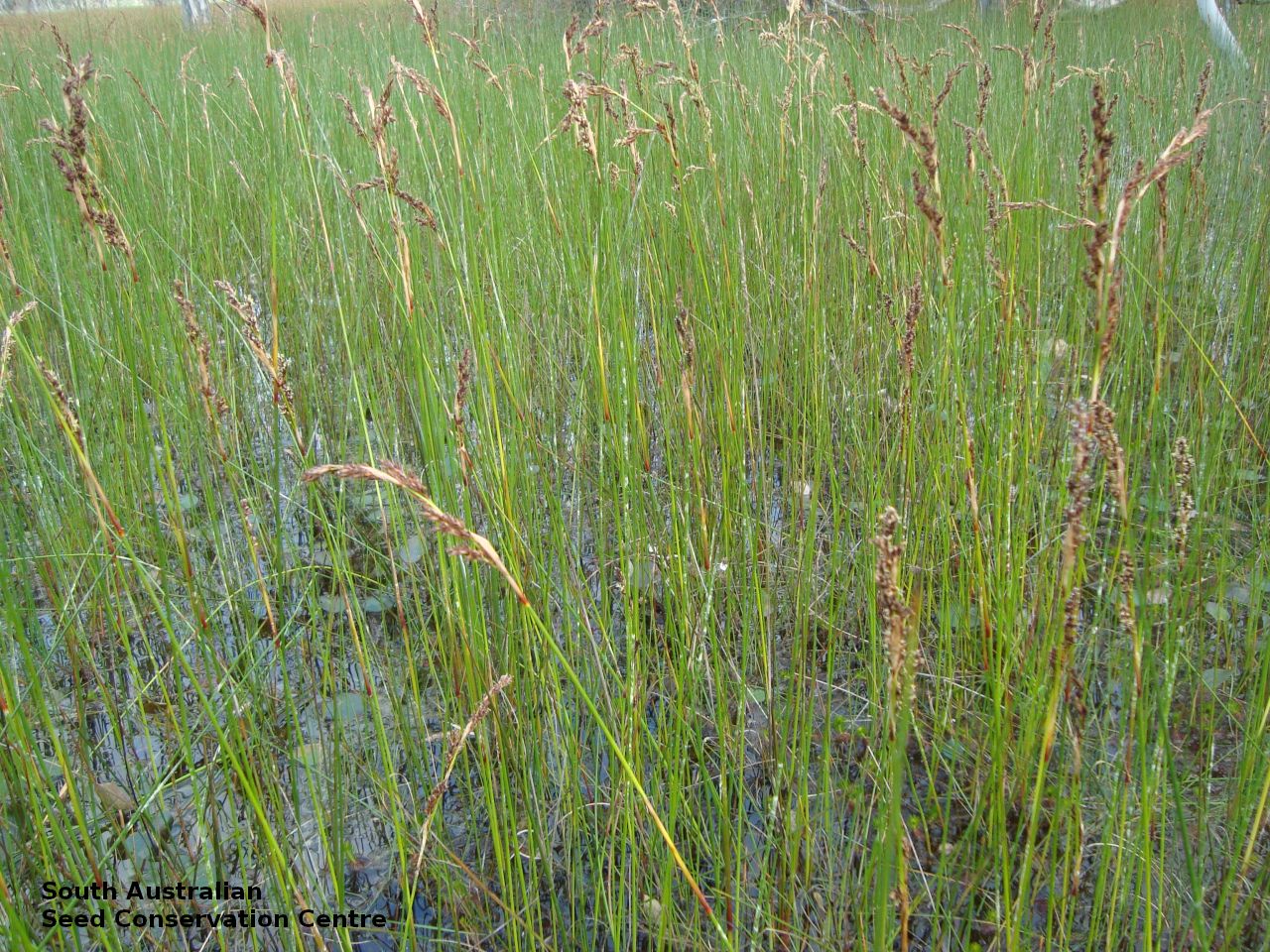
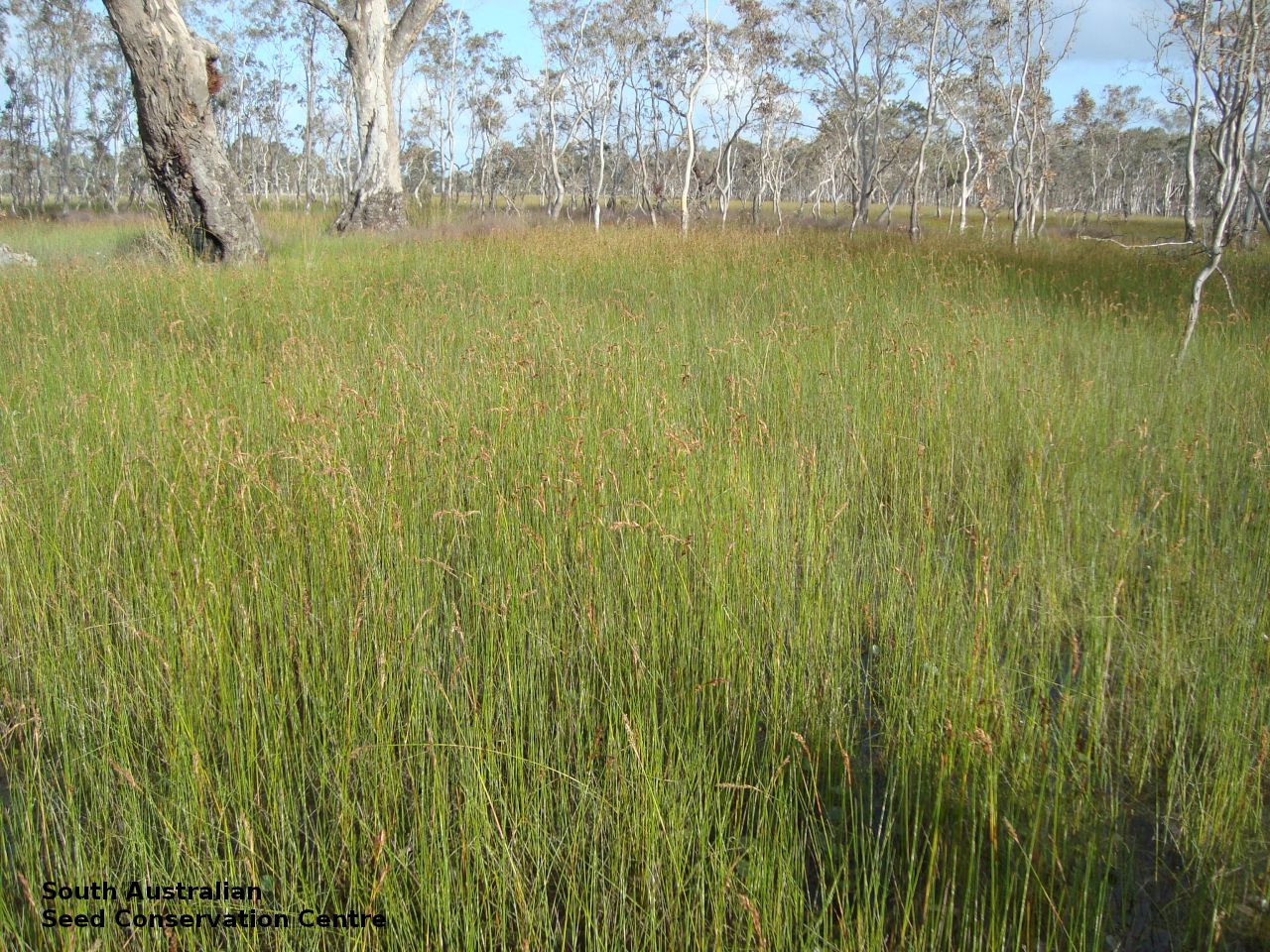

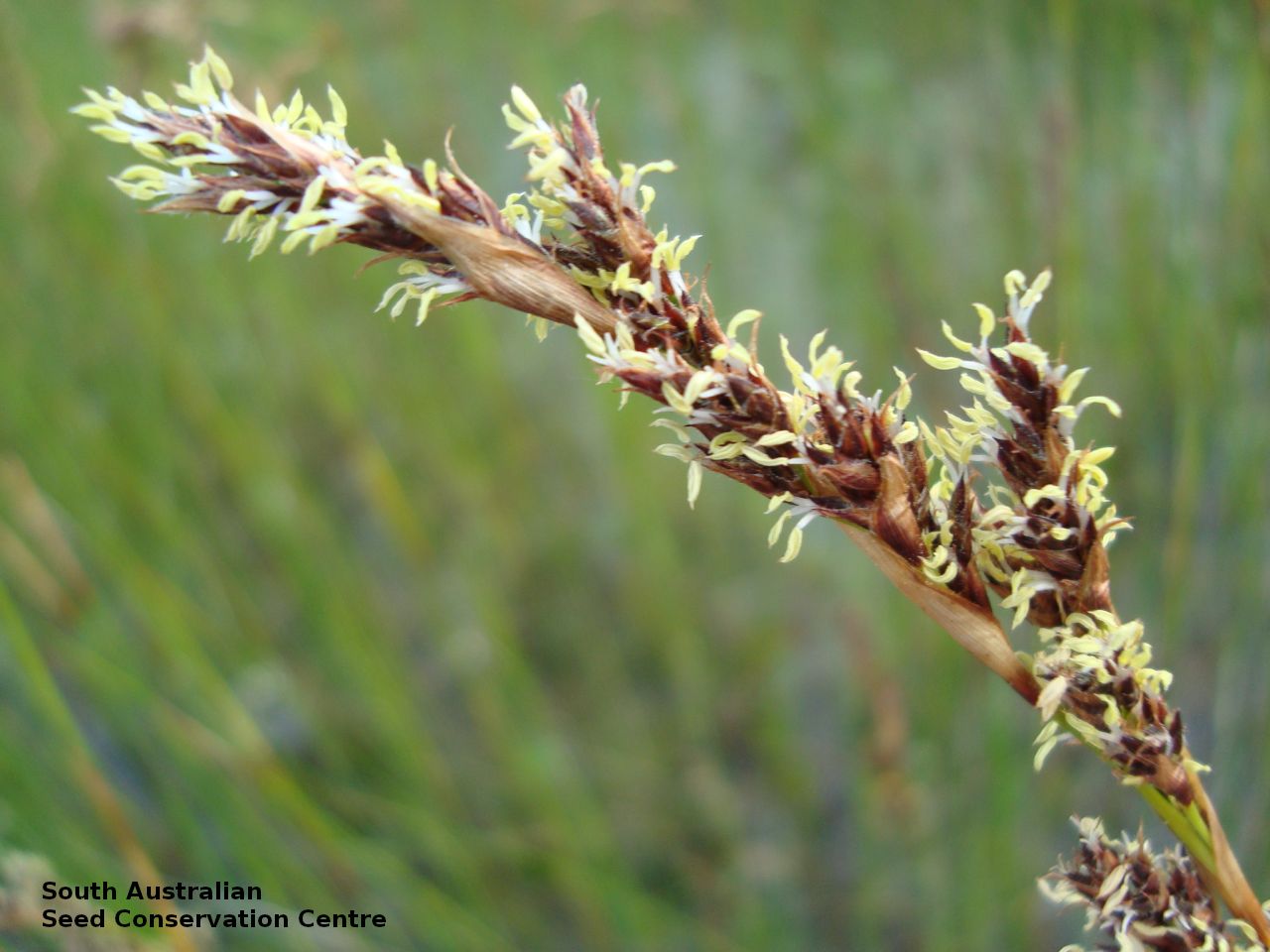

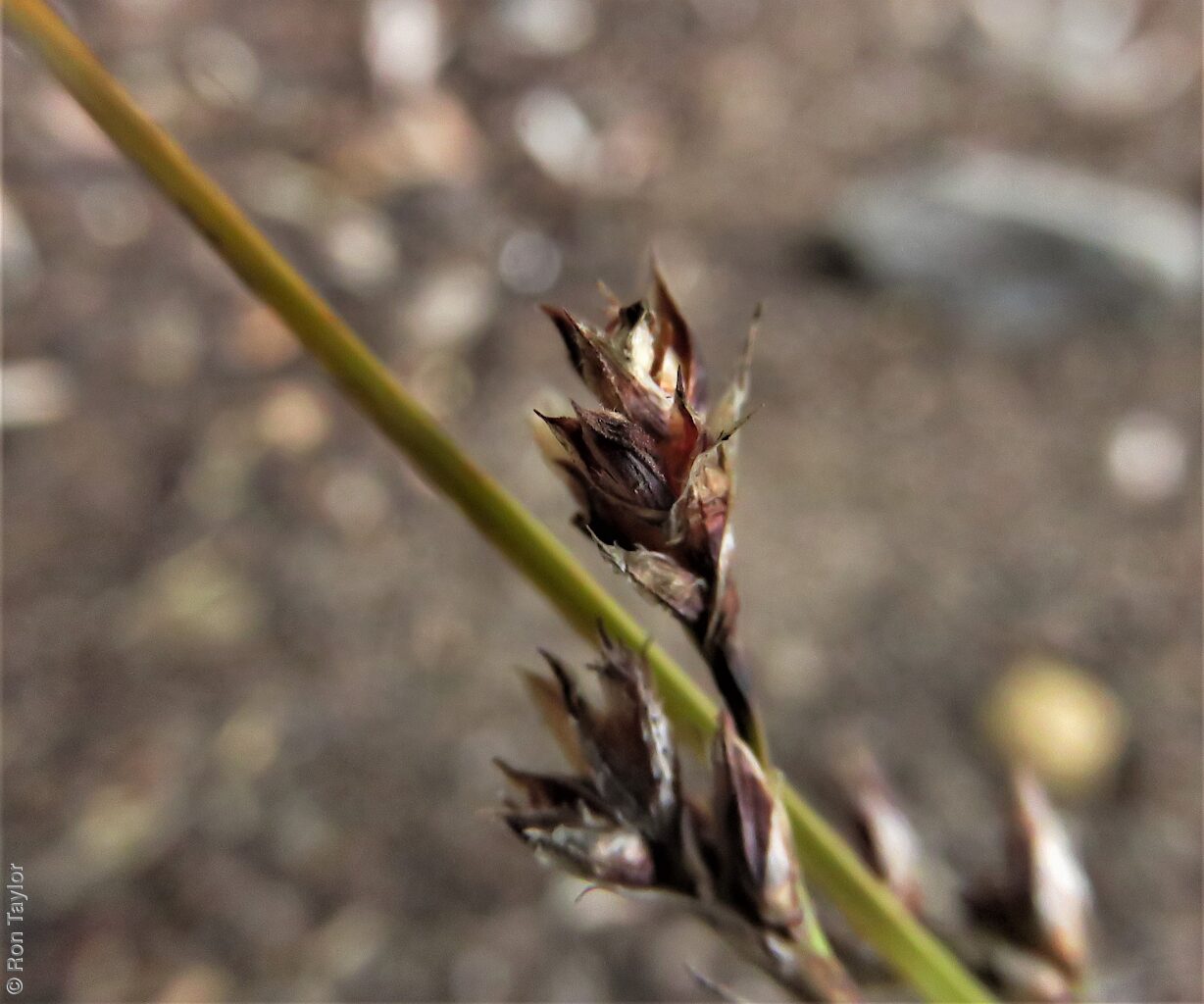


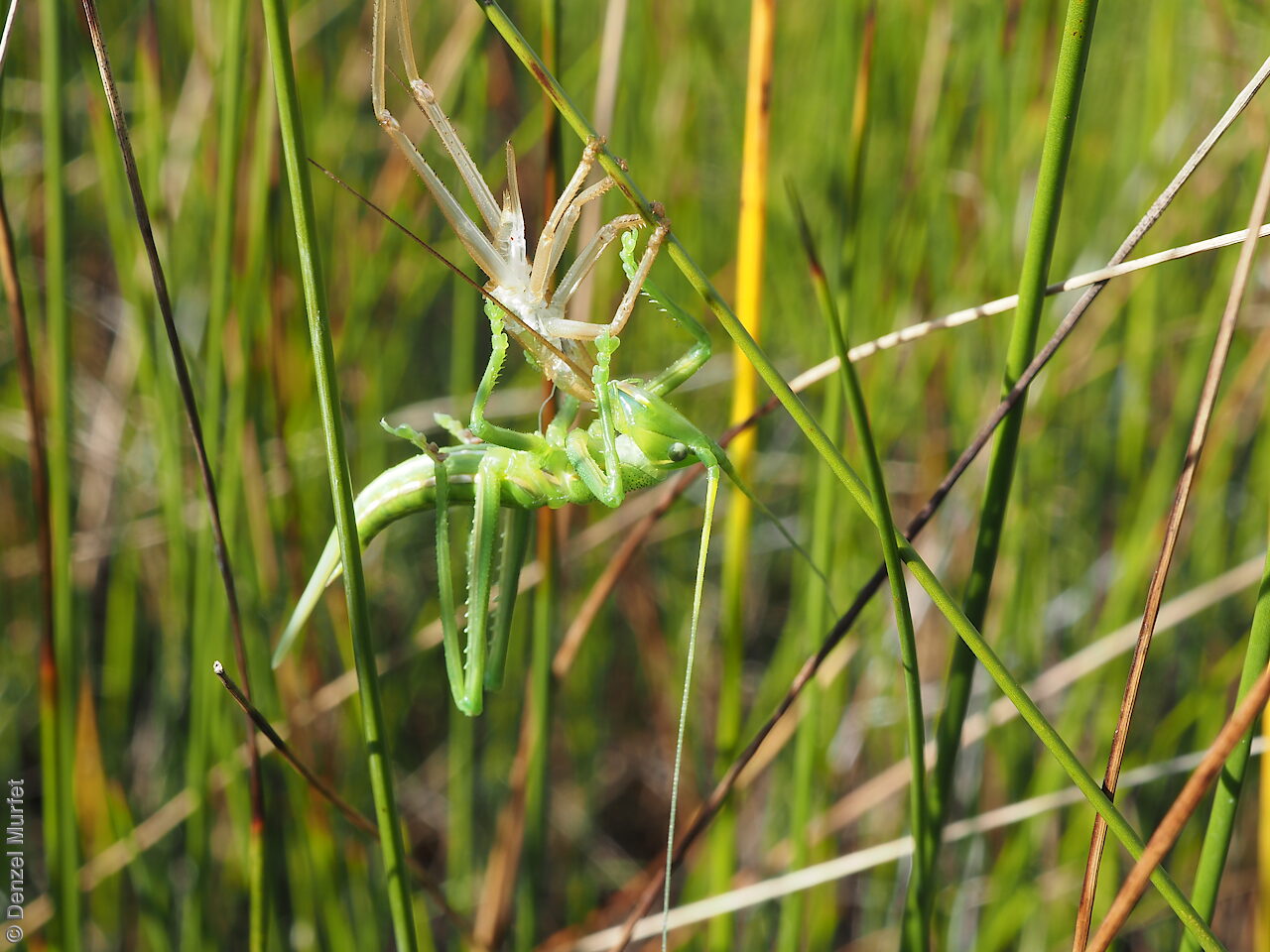




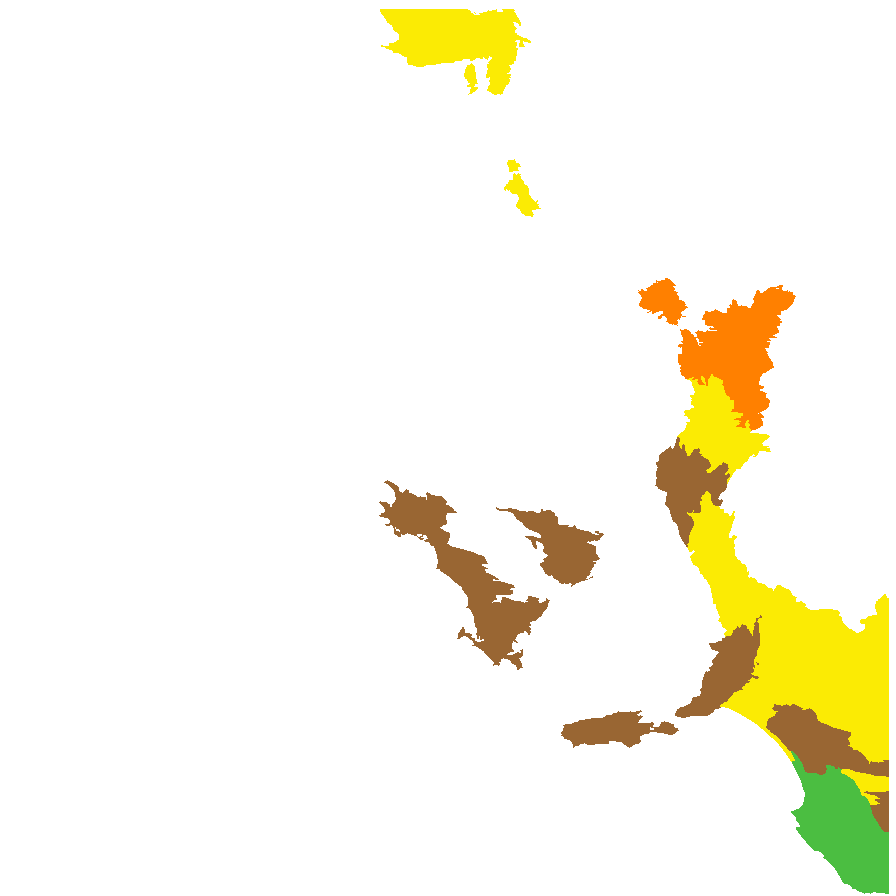
Botanical art
Prior names
Baumea arthrophylla
Cladium arthrophyllum
Machaerina huttonii
Cladium huttonii
Chapelliera arthrophylla
Baumea huttonii
Common names
Fine Twig-sedge
Swamp Twig-rush
Etymology
Machaerina from the Latin 'machaera' meaning a bent dagger or sword, and the feminine diminutive suffix '-ina", referring to the shape of the leaves of some species (formally Baumea named after Antoine Baume (1728 - 1804), a French chemist and inventor). Arthrophylla from the Greek 'arthron' meaning joint and 'phyllon' meaning leaf.
Distribution and status
Found mainly in the southern part of South Australia from the Gammon Ranges, with isolated distribution in hot springs further north, growing mainly in swamps. Also found in all other States. Native. Common in South Australia. Rare in Northern Territory and Queensland. Common in all other States.
Herbarium regions: Lake Eyre, Flinders Ranges, Eyre Peninsula, Northern Lofty, Murray, Southern Lofty, Kangaroo Island, South Eastern, Green Adelaide
AVH map: SA distribution map (external link)
Plant description
Perennial sedge with stems to 2 m high, slender, subterete or compressed, indistinctly septate with one stem leaf with a short lamina or reduced almost to the sheath. Inflorescence a spike to 25 cm long with brown spikelets. Flowering between September and March. Fruits are large brown fruit heads at the tip of stems. Seeds are light brown, woody ellipsoid nut to 4 mm long and 2 mm wide. Seed embryo type is capitate.
Seed collection and propagation
Collect seeds between November and May. Collect whole heads that are brown, containing dark hard seeds. Not all heads will contain seeds. Place the heads in a tray and leave to dry for one to two weeks. Then rub the heads with a rubber bung to dislodge the seeds. Use a sieve to separate any unwanted material. Store the seeds with a desiccant such as dried silica beads or dry rice, in an air tight container in a cool and dry place. Seed viability is variable depending on maturity of seeds when collected. This species is generally difficult to germinate, it has morphophysiological dormancy and complex germination requirements.
| Location | No. of seeds (weight grams) | Number of plants | Date collected | Collection number Collection location | Date stored | % Viability | Storage temperature |
|---|---|---|---|---|---|---|---|
| MSB | 2,300 (1.37 g) | 200+ | 11-Apr-2006 | DJD459 South Eastern | |||
| BGA | 13,700 (12.68 g) | 100+ | 12-Mar-2010 | TST923 Southern Lofty | 1-Jun-2010 | 95% | -18°C |
Number of plants: This is the number of plants from which the seeds were collected.
Collection location: The Herbarium of South Australia's region name.
% Viability: Percentage of filled healthy seeds determined by a cut test or x-ray.